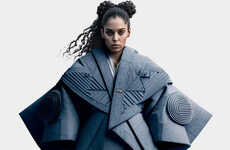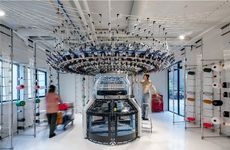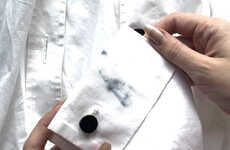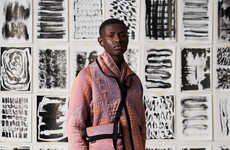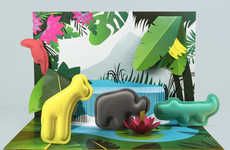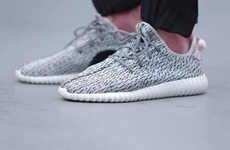
These Garments Can Be Assembled Without a Sewing Machine
Katherine Pendrill — October 20, 2015 — Art & Design
References: veradepont & dezeen
Vera de Pont just launched a stitch-free clothing collection that can be assembled without a sewing machine. While many designers experiment with unique designs and unexpected materials, these pieces are usually assembled in the same manner. This collection deviates from conventional design by allowing consumers to put the garment together themselves.
De Pont is a recent graduate of the 'Design Academy Eindhoven' and her collection was created while she was studying there. The collection itself consists of five coats, which are either woven or silkscreen-printed. Each coats is made from a single piece of fabric, meaning it can be delivered to the wearer as a compact roll. The stitch-free design means that the garment can be assembled by the consumer without a sewing machine. The user-friendly pieces help the consumer contribute to the design process and play a role in the production of their clothing.
The collection demonstrates a unique way to bridge the gap between the fashion industry and maker culture.
De Pont is a recent graduate of the 'Design Academy Eindhoven' and her collection was created while she was studying there. The collection itself consists of five coats, which are either woven or silkscreen-printed. Each coats is made from a single piece of fabric, meaning it can be delivered to the wearer as a compact roll. The stitch-free design means that the garment can be assembled by the consumer without a sewing machine. The user-friendly pieces help the consumer contribute to the design process and play a role in the production of their clothing.
The collection demonstrates a unique way to bridge the gap between the fashion industry and maker culture.
Trend Themes
1. Stitch-free Clothing - Creating garments without the need for traditional sewing methods, allowing for easy assembly by consumers.
2. User-friendly Design - Designing products that are easy for consumers to assemble and customize.
3. Fashion and Maker Culture - Merging the fashion industry with the growing maker culture movement, encouraging consumer participation in the design process.
Industry Implications
1. Fashion - Opportunities for fashion brands to explore innovative methods of garment assembly, appealing to consumers who value DIY and customization.
2. Textile Manufacturing - Opportunities in textile manufacturing to develop stitch-free techniques, reducing production time and costs.
3. Product Design - Opportunities for product designers to create user-friendly designs that empower consumers to be part of the production process.
6.6
Score
Popularity
Activity
Freshness



